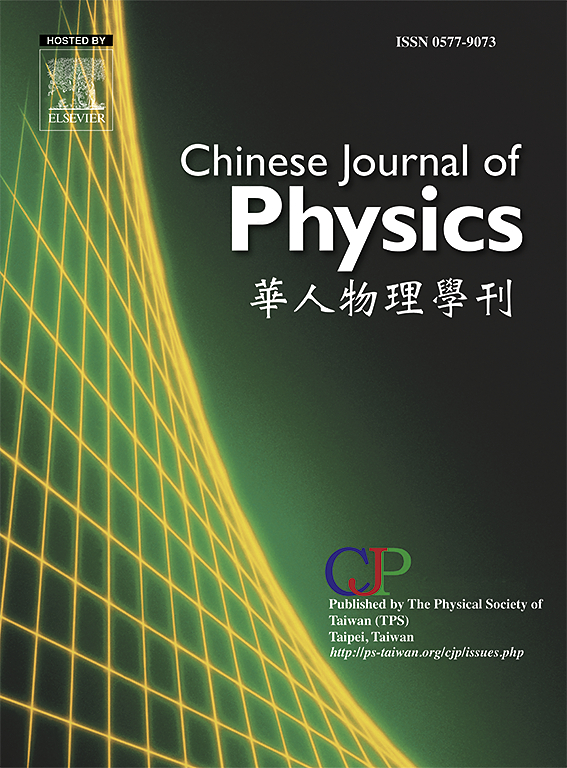从代数方法的精确量子伦德勒坐标系
IF 4.6
2区 物理与天体物理
Q1 PHYSICS, MULTIDISCIPLINARY
引用次数: 0
摘要
我们已经开发了海森堡图像方法在任意度量时空中的量子力学,并在之前的出版物中获得了量子测地线方程。这幅图很自然地符合最近流行的量子参考系变换的主题,建议将不同位置的可观测物视为时空的坐标可观测物。我们认为这是一种量子物理学的方法,非常符合海森堡和狄拉克的原始思想,现在用狄拉克的可观测值的q值概念的明确数学表达式来完成。量子物理学可以这样分析,独立于任何Schrödinger图片。除了笛卡尔坐标图像之外,海森堡和Schrödinger图像之间的对应关系通常是非平凡的,这取决于度量表达式和参照系。我们专注于海森堡-狄拉克图像的代数方法,以表达具有量子固有加速度的精确量子伦德勒坐标系的变换。后者已被许多作者在半经典治疗中考虑过。对一些有趣的结果进行了分析。当作为新坐标系的粒子处于定义该变换的观测值的特征态的非平凡叠加时,量子参照系变换产生纠缠特征的特征,在这种情况下说明了适当的加速度。对其他“量子伦德勒观测者”的概念也进行了分析。说明了量子伦德勒坐标系中的度规成为一个非定域可观测,并讨论了其深刻含义。关于变换的统一性的问题被仔细地处理。本文还讨论了用时空的量子图象和它的量子相对性原理来看待一般主题的一致观点。本文章由计算机程序翻译,如有差异,请以英文原文为准。
Exact quantum Rindler frames from an algebraic approach
We have developed the Heisenberg picture approach to quantum mechanics in spacetime with an arbitrary metric and obtained quantum geodesic equations in a previous publication. The picture naturally fits in with the recently popular topic of quantum reference frame transformations, suggesting treating the different position observables as coordinate observables of spacetime. We see that as an approach to quantum physics that is very much along the original idea of Heisenberg and Dirac, completed now with explicit mathematical expressions for Dirac’s notion of q-number values of observables. Quantum physics can be analyzed as such, independent of any Schrödinger picture. Beyond the Cartesian coordinate pictures, correspondence between the Heisenberg and the Schrödinger picture is generally nontrivial, depending on the metric expression and the frame of reference. We focus on the algebraic approach for the Heisenberg-Dirac picture to formulate transformations to exact quantum Rindler frames with quantum proper accelerations. The latter has been considered by various authors in semiclassical treatments. Analyses of some interesting results are presented. The characteristic feature of quantum reference frame transformations in giving rise to entanglement features when the particle to serve as the new frame is in a nontrivial superposition of eigenstates for the observable defining the transformation, the proper acceleration in this case, is illustrated. The notion of other ‘quantum Rindler observers’ is also analyzed. The metric in the quantum Rindler frame is illustrated to become a nonlocal observable with profound implications of which are also discussed. The question about unitarity of the transformations is carefully addressed. Discussions about a consistent perspective on the general subject matter with a quantum picture of spacetime and its Quantum Relativity Principle are also presented.
求助全文
通过发布文献求助,成功后即可免费获取论文全文。
去求助
来源期刊

Chinese Journal of Physics
物理-物理:综合
CiteScore
8.50
自引率
10.00%
发文量
361
审稿时长
44 days
期刊介绍:
The Chinese Journal of Physics publishes important advances in various branches in physics, including statistical and biophysical physics, condensed matter physics, atomic/molecular physics, optics, particle physics and nuclear physics.
The editors welcome manuscripts on:
-General Physics: Statistical and Quantum Mechanics, etc.-
Gravitation and Astrophysics-
Elementary Particles and Fields-
Nuclear Physics-
Atomic, Molecular, and Optical Physics-
Quantum Information and Quantum Computation-
Fluid Dynamics, Nonlinear Dynamics, Chaos, and Complex Networks-
Plasma and Beam Physics-
Condensed Matter: Structure, etc.-
Condensed Matter: Electronic Properties, etc.-
Polymer, Soft Matter, Biological, and Interdisciplinary Physics.
CJP publishes regular research papers, feature articles and review papers.
 求助内容:
求助内容: 应助结果提醒方式:
应助结果提醒方式:


